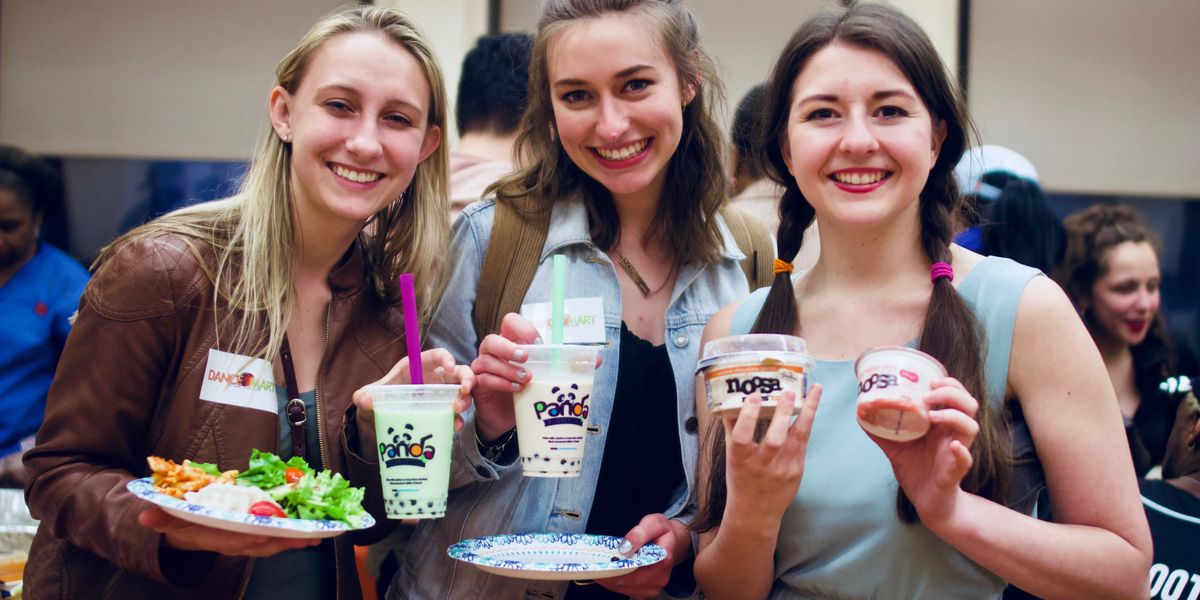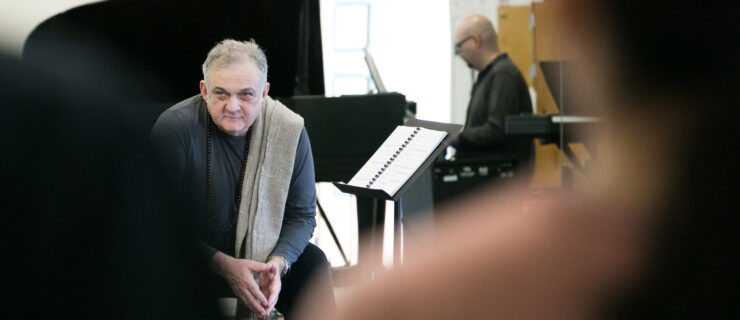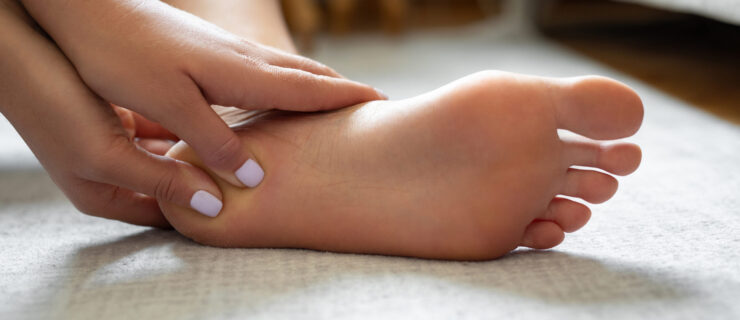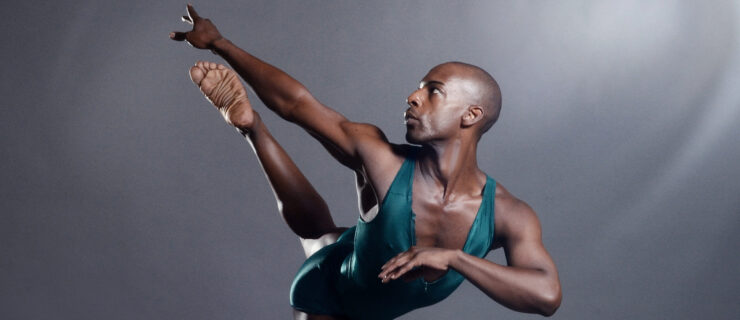Dancers in New York City Can Get Free Groceries Every Month
Time
after time we’ve been reminded that fueling our bodies with healthy food is absolutely essential to dancing our best.
But according to the H+ | The Hip-Hop Dance Conservatory, one in every three dancers in New York City lives under the poverty line, and may lack the resources to purchase the ingredients they need to make nutritious meals.
Not to mention the fact that dancers are busy, and often running around from class to rehearsal to performance to side hustle, grabbing whatever they can get to eat on-the-go.
That’s what inspired H+ to give out free groceries to dancers through their monthly DanceMart program. No, there’s no catch—in fact, since the program’s founding in 2015 they’ve given out $1.3 million worth of groceries to over 7,500 dancers.
“Dancers will forego eating to take classes,” says Yvonne Chow, H+’s director of operations. “So we’re trying to not make this such a burden for them. And recognize that there’s a whole community of people that are going through it.”
We visited DanceMart in New York City to see for ourselves:
Who Can Get Free Groceries
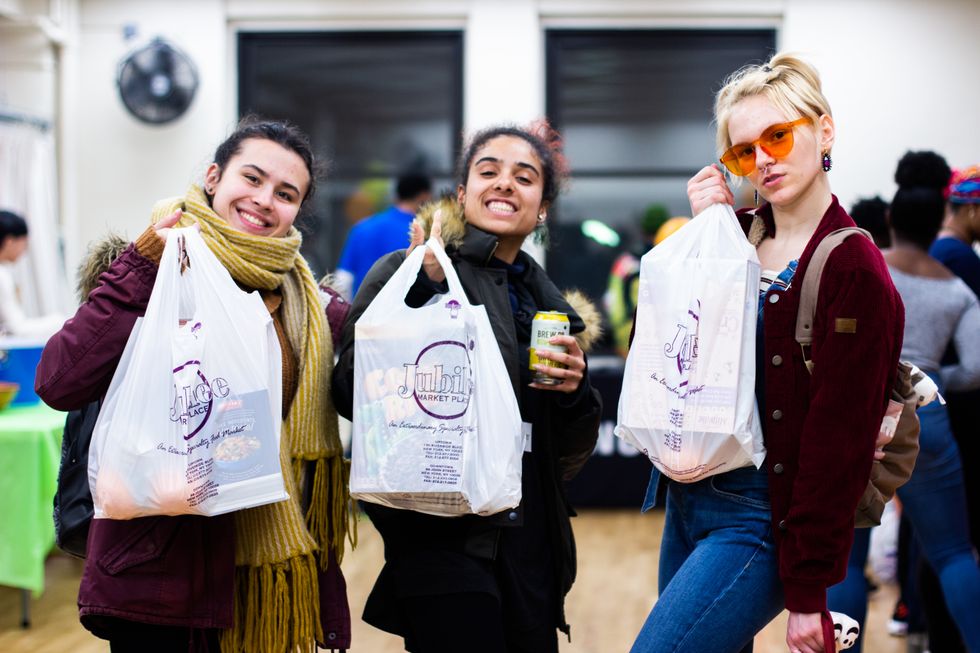
Though the program, founded by H+ artistic director Safi A. Thomas, was created to help professional and pre-professional dancers supplement their groceries, anyone who self-identifies as a dancer can attend DanceMart, says Chow. She says they’ve had dancers from hip hop, contemporary, modern, ballet, jazz, Bollywood, Latin ballroom and bellydance genres.
What the Experience Is Like
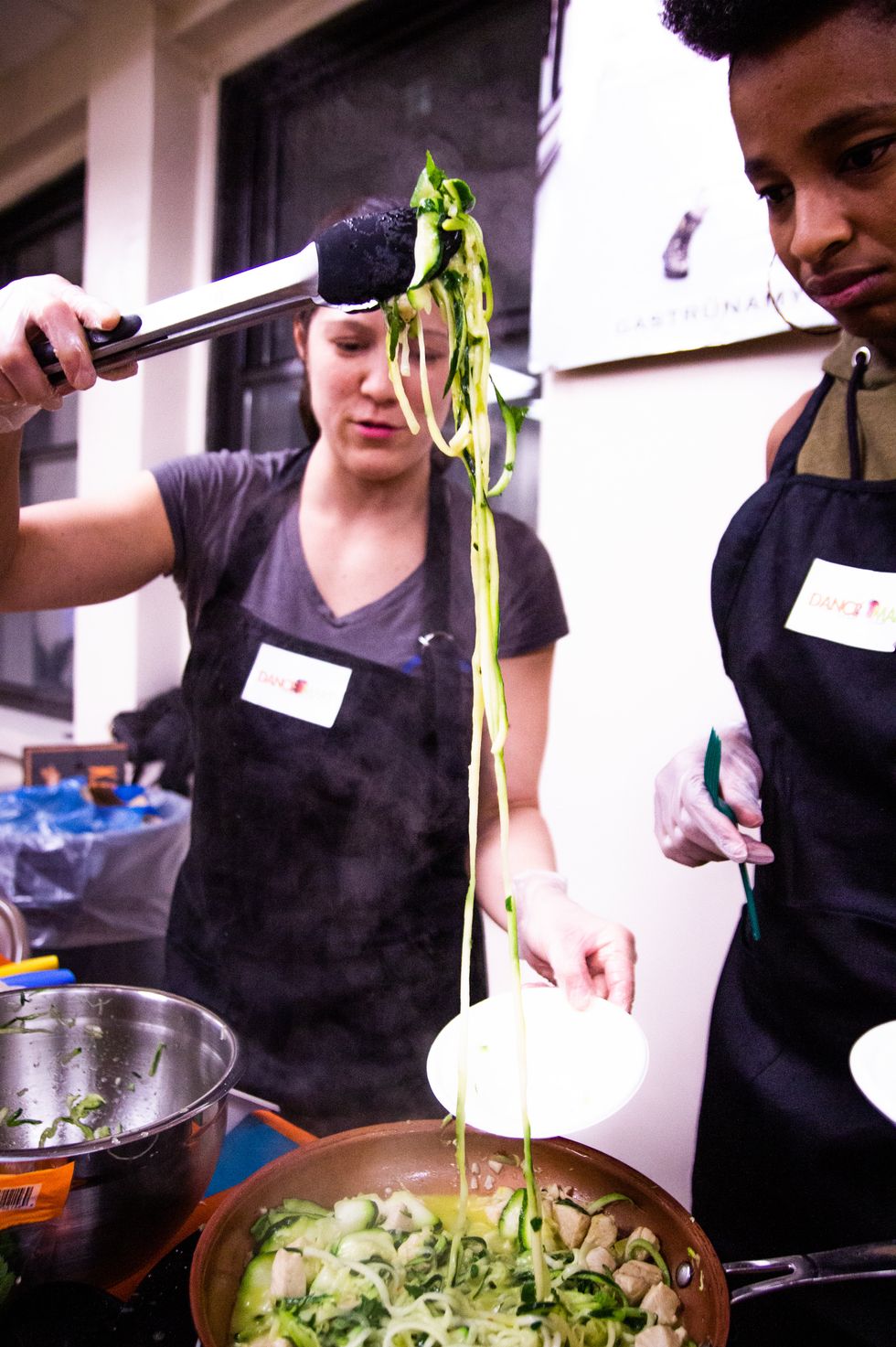
Yes, DanceMart gives dancers free food. But it’s more than just a grocery program, says Chow.
Dancers travel through several stations, including one where they can get free dinner (when we visited there were Chipotle burritos and salad), and a cooking station, where they can learn to make a healthy meal that costs under $10 and takes less than 15 minutes (for example, traditional Trinidadian food: curried chicken and channa, sautéed spinach with garlic, and caramelized bananas).
Participants try their hand at cooking these dishes, and are sent off with the recipe and the majority of the ingredients they’ll need to make it. “We want dancers to understand that it’s not hard to cook for themselves,” says Chow. “It’s not as time-consuming as they think, and there are simple things they can do so that they’re not spending all their hard-earned money on food.”
But perhaps the most important part of the experience is the dance party that’s happening in the middle of it all—live DJ included. “You see all different types of dancers coming together and enjoying themselves,” says Chow. “Often you don’t see that because dancers are all in our different studios and we rarely talk to each other. We can’t go to each other’s performances because we’re all performing. So it’s funny because even though we’re such a small community, we often don’t see each other beyond our little niche.”
How the Dance Community Has Reacted
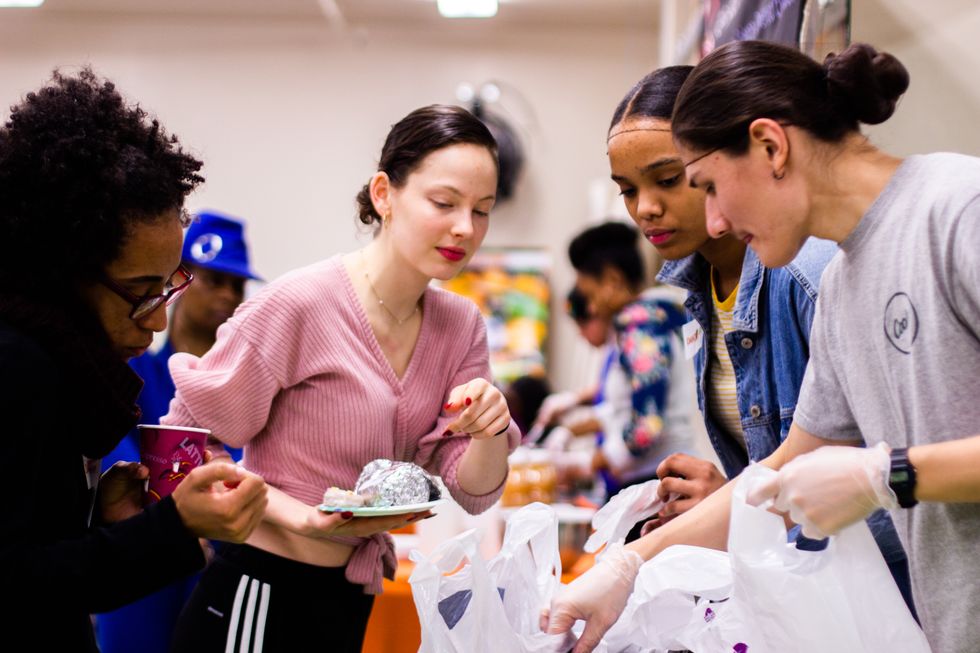
If you can’t believe a program like DanceMart exists (or that you didn’t know about it until now!), you’re not alone. Chow says that shock is the most common response she gets from dancers, who are surprised by H+’s generosity as well as the fact that those organizing the event are also dancers themselves. “We’re so conditioned to feel like people have to come from the outside to help us, Like I have to apply for a grant, and somebody else has that money and they’re gonna give it to me,” says Chow. “A lot of dancers were confused why we would do this for free. But we literally know what it’s like for dancers because we are dancers.”
Gratitude is also a common response, and Chow says that DanceMart regulars often stay late to help clean up, or want to know how they can volunteer.
On the Shame of Getting Help
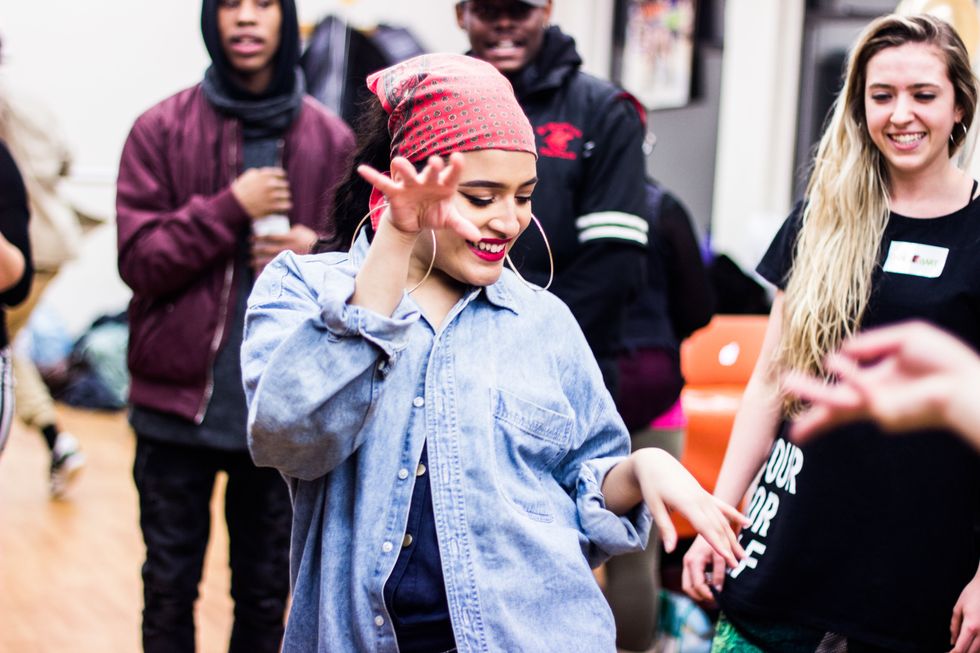
“A lot of dancers, even if they would qualify to get food from a food pantry or soup kitchen, they have too much pride,” says Chow. “But dancers say that they don’t feel like it’s a grocery program, they feel like it’s a party. You happen to get groceries on the way out, but it’s not the central part of the experience. So I think that’s why people feel okay to come here.”
The Biggest Challenges DanceMart Faces
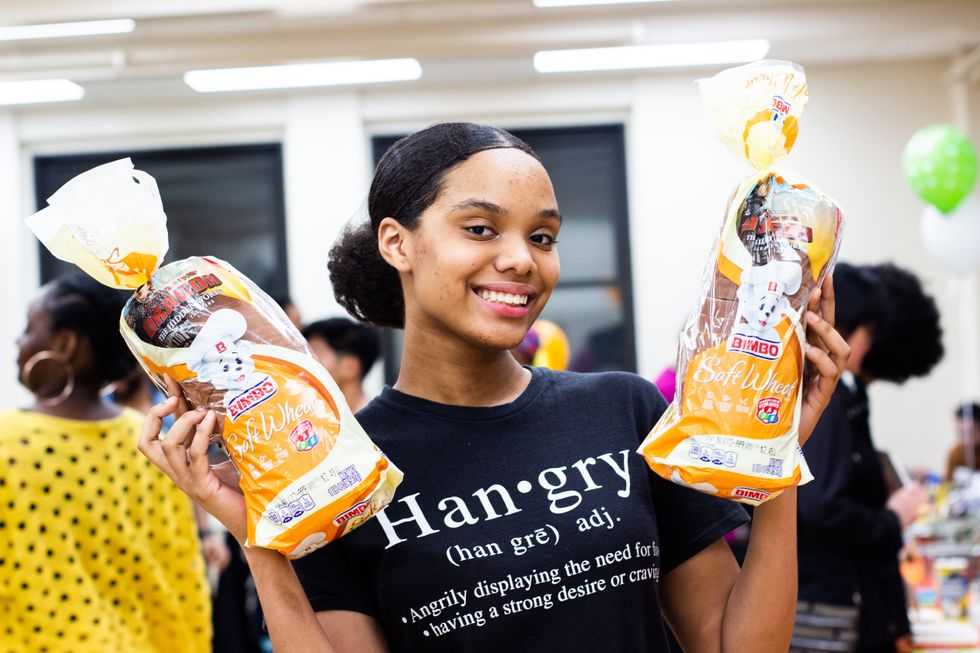 Courtesy H+ | AK47 Division
Courtesy H+ | AK47 Division
Since all of DanceMart’s food is donated, H+ is often in the position of justifying why it makes sense to give dancers free food. “A lot of people don’t understand that dancers are humans, and they have human challenges, not just dance challenges,” says Chow. “Trying to get healthy food, trying to get health insurance. A lot of dancers quit because they can’t get those things taken care of.”
Don’t Live In NYC?
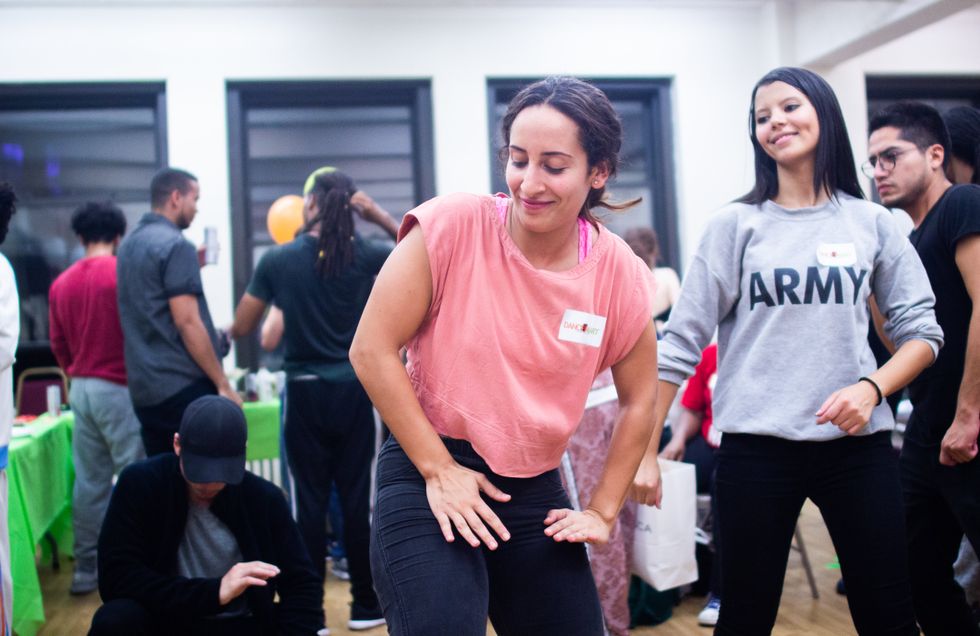
DanceMart hopes to expand to other major dance hubs, like Chicago, Los Angeles and the Bay Area.
They also hope to become a weekly program in NYC, so “every week dancers know where they can get their groceries,” says Chow.
